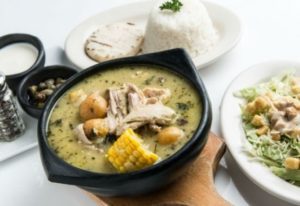
At present, the nations that have tourism as the main source of income, or, as an economic model, try to reflect as much as possible their cultural diversity to the whole world, in order to capture the attention of the greatest number of tourists. Analysts suggest that the nation with the greatest cultural diversity, in general, is quite curious for tourists and emigrants.
In general, although it seems simple, the food builds a traditional orientation of the communities and is present in every daily activity of domestic, religious or work, and also, in each commemorative celebration of a certain date. Conforming this, one more aspect that strengthens the cultural identity of a certain region. That is, through traditional gastronomy, families interact and make remembrance of significant events of sociocultural order, and this traditional diet is a representative element in the world.
Costa Rica has made its cultural reserves intangible, and among these, is the theme of tradition and custom of feeding their towns and cities. This has not only allowed the natives of this section of Central America to get to know and get more involved with their culture, but also offers tourists the opportunity to contemplate and feel the culinary heritage of this region.
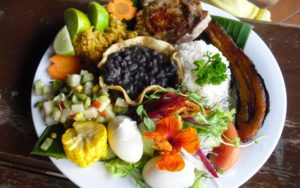
This has given relevance to the cultural category of gastronomy, carrying out, for a long time, a process of restoration and revitalization of its traditional cuisine. The main intention of mentioned restoration and revitalization of the traditional gastronomy of the referred Caribbean country lies in fortifying the identity and sense of belonging to the inhabitants.
The way in which this Caribbean nation has been highlighting its culinary cultural heritage is through the celebration of an activity called “Typical food and drink contest”. This contest corresponds to a project carried out by the Center for Research and Conservation of Cultural Heritage of the Ministry of Culture, Youth, and Sports.
Since this ceremony was institutionalized, it has been carried out in all the provinces of Costa Rica, surrounding the province of San José, which are Guanaste (2000), Cartago (2001), the Central Pacific region represented by Puntarenas (2003). , Heredia (2004), Limón (2005) and Alajuela (2007 and 2010). Some of these contests can get texts related to them on the network, where they describe each dish typical of the region.
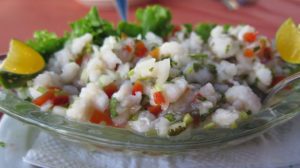
Ancestrally, one of the main and representative culinary elements of the food base of America is corn, however, the Costa Rican region is characterized by having a food miscegenation that makes it different from the other nations of the American continent, but it constitutes it as the Central link of the food heritage of North and South America.
Well, Costa Rica contains, within its culinary custom, ingredients from both poles mentioned above. The Costa Rican nation is part of the territorial extension called Gran Nicoya, which is located from the depression of Managua to the Gulf of Nicoya, where it absorbs the food influence of Mesoamerica characterized by corn, beans, and chili, which They are complemented with meats, poultry, and fish.
To the south, this Central American country is part of the extension that forms a mediating area in America, which it shares together with Panama, Colombia, and Ecuador, receiving the southern influence of a diet based on pejibayes, also known as pejibáes, tubers, especially cassava, and pineapples. Like the northern region, these ingredients are accompanied by meat, poultry, and fish.
The above gives Costa Rica a cultural mix, which has been described in the Americas as one of the healthiest. There are more ingredients in the Costa Rican dish that is native to the region, such as tomato, cocoa, potatoes, squash, avocado, tacaco, chayote, among others. However, those mentioned above are the most representative of the nation’s food culture.
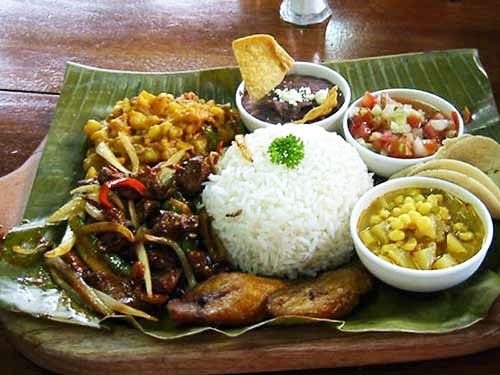
Among the cultural dishes that represent the Costa Rican nation can be mentioned: corn rice, stuffed chiles accompanied by white rice, beans with pork rib, patacones soup, pozole tico, bean tamales, among others. As bread and desserts, the Costa Rican enjoys a wide variety, among them arepa, rice with milk, homemade bread, yeast bread, corn pudding, wheat empanadas, among others. And of the beverages, it is worth mentioning corn chicha, toad water, pineapple with rice, et cetera.
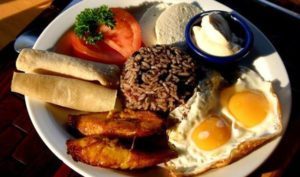
Costa Rica has a healthy food cultural heritage, which is preserved through the promotion of knowledge of the culinary ingredients characteristic of the area and its form of preparation, which is addressed to the natives of the region and foreigners who reside permanently or They practice tourism in that country.
In this way, this wonderful Central American country not only offers the enjoyment of its ecological reserves but also offers citizens and tourists the opportunity to taste their culinary heritage reserve, which features dishes with ancestral elements typical of the Mesoamerican and South American culture.

